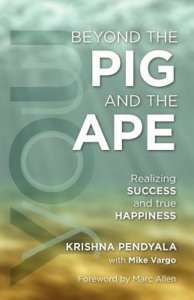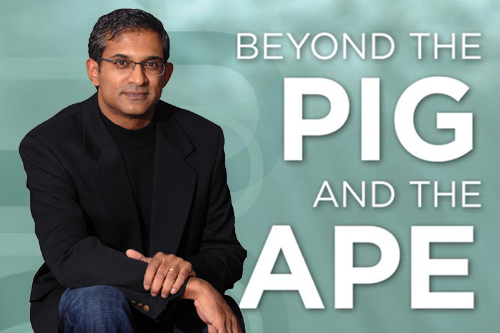

Krishna Pendyala was one of a talented and lucky handful of Indian students to matriculate at the Indian Institute of Technology. An IIT degree was a ticket to a high-status, top-paying job—and it opened the door to emigration to the United States, where there were even more possibilities. At age 18, his whole life was laid out before him like a banquet, but he was miserable to his core. When he emerged from a coma after his third and final suicide attempt (he’d bought a berth on a long-distance train and taken an overdose of sleeping pills—a “ride to nowhere”), his left leg was paralyzed. He spent the next six months in bed, recuperating and reflecting. “Eventually,” he writes, “I reached a conclusion: It looks like I am destined to live in this world, so I had better learn how.”
He got back on track, finished his degree, and came to the U.S., where he earned another degree. Eventually he became an entrepreneur, starting and selling two companies. He got married and had children. And all the while, he was reading hundreds of self-help and motivational books. “I turned into a positive-thinking fiend,” he recalls. But for all his success, happiness—real, true, lasting happiness—was elusive. Then he made a discovery: his “inner planet—the sphere of existence that I liked to call ‘me’—was under occupation. There were creatures in there living my life for me, making choices for me, without my knowing it.”
It sounds like something out of a horror movie, and in a way it is. It sounds like something out of Kipling, Aesop, or Uncle Remus (or maybe Jung), and it’s all those, too. I admit I flinched a little when I read that passage, expecting something silly or trite to follow, but what came next took me by surprise.
In Beyond the PIG and the APE: Realizing Success and True Happiness, Pendyala identifies three creatures: the PIG, the APE, and the Ego. The PIG and the APE are acronyms—the PIG is the personification of the part of us that Pursues Instant Gratification above all; the APE is the part that Avoids Painful Experiences. Both of them are features of our limbic system; they are adaptive behavioral patterns that aided our survival as a species. Our APE lies low and avoids conflict (a prudent course for early humans, who were compelled to share living space with saber-toothed tigers, bears, and hostile members of their own species); the PIG grabs and gobbles whatever and whenever it can (a sensible survival tactic for hunter-gatherers). The Ego is a little harder to characterize. Most of us think of the Ego as our Self, but it’s not—it just wants us to think it is.
Your Ego includes all that it thinks you are, including many things that really aren’t you at all. A simple example: if we have grown up believing that material possessions are important—that the nature and quality of them define the person—then we are likely to be upset when the new car starts picking up a few dents.
“Your Ego isn’t you,” Pendyala continues. “It’s a fictional version, a made-up version.”
Beyond the PIG and the APE doesn’t provide a magic formula for happiness, but it goes far to help us understand what’s standing in the way.
Beyond the PIG and the APE doesn’t provide a magic formula for happiness, but it goes far to help us understand what’s standing in the way. It’s a tool I’ll use in analyzing my own misbehaviors.
As Pogo said a long time ago, “we have met the enemy and he is us.” But he doesn’t have to be.
Related Articles
- Conversations with Krishna Pendyala (Part I): On animal acronyms, self-esteem, and delaying gratification
- Conversations with Krishna Pendyala (Part II): Egos, monkey minds, and letting our children fall
- Conversations with Krishna Pendyala (Part III): Distinguishing between intuition and instinct
- Conversations with Krishna Pendyala (Part IV): Three levels of choice



